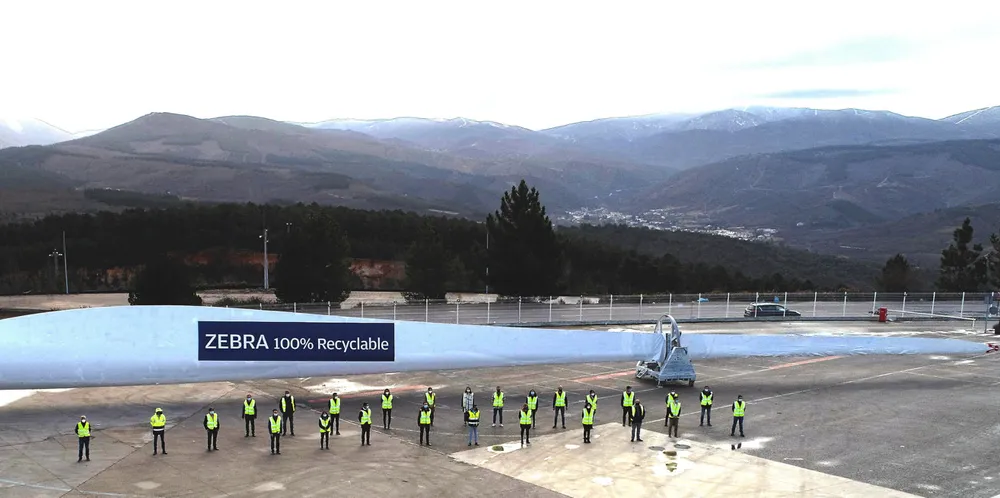'Circular economy loop' | World's first zero-waste blade ready to fly in Europe
The eco-design prototype developed by a consortium led by GE-owned LM Wind Power moves into testing in major stride toward sector sustainability ambitions

The prototype of an ‘eco-design’ wind turbine blade fashioned from thermoplastics and a new-generation recyclable resin has come out of the moulds at GE-owned LM Wind Power’s fabrication hall in Spain.
The 62-metre-long blade, laid-up in the contractor’s fabrication hall in Ponferrada, Spain, is the first fruit of the Zebra (zero waste blade research) consortium, a cross-sector group made up of LM, Engie, Suez, Canoe, Owens Corning and Arkema – the last two which devised new high-performance glass materials and resin, respectively, for the design.
“The manufacture of this first blade is a great success for the entire consortium and for the wind industry in general," Céline Largeau, project manager at IRT Jules Verne, the manufacturing-focused industrial research centre that supported the Zebra project.
“Work on the project is progressing according to schedule, which has all the necessary expertise for the deployment of sustainable thermoplastic wind turbine blades.
John Korsgaard, senior director of engineering excellence at LM Wind Power, said: “With this project we are addressing two crucial industry challenges. On one hand, we are progressing on our zero-waste blades vision by preventing and recycling manufacturing waste.
“On the other, we are taking blade recyclability to a new level: the end-of-life thermoplastic composite blade material has high value in itself and can be readily utilised in other industries as material compounds but can also be depolymerised and the resin reused in the production of new blades.”
The novel liquid thermoplastic resin developed for the Zebra prototype is said to “perfectly adapted” to use in the large-scale manufacturing by infusion with the blade fabrics designed by Owens Corning, creating a composite material with “similar performances to thermoset resins but with a key unique benefit: recyclability”.
The new blade composite’s components can undergo chemical recycling that makes it possible to fully depolymerise the resin, separate the fibre from it and recover “virgin” resin and high-modulus glass ready for re-use.
Zebra aims to spearhead the wind power industry’s transition to a circular economy for blades via a consortium representing “the full value chain” from development of materials, to blade manufacturing, to wind turbine operation and decommissioning, and recycling of decommissioned units.
Cooperation between Europe’s wind, chemical and composites industries is seen as key to honing the economics of recycling the 14,000 wind turbine blades that are to be decommissioned in the next three years.
Full-scale structural lifetime testing of the Zebra prototype is slated to start in the coming weeks in Denmark with validation of the recycling methods expected before the end of the year.
“By the end of the project in 2023, the consortium will have met the challenge of bringing the wind energy sector into the circular economy loop in a sustainable manner, according to the principles of eco-design,” said the partners in a statement.
(Copyright)